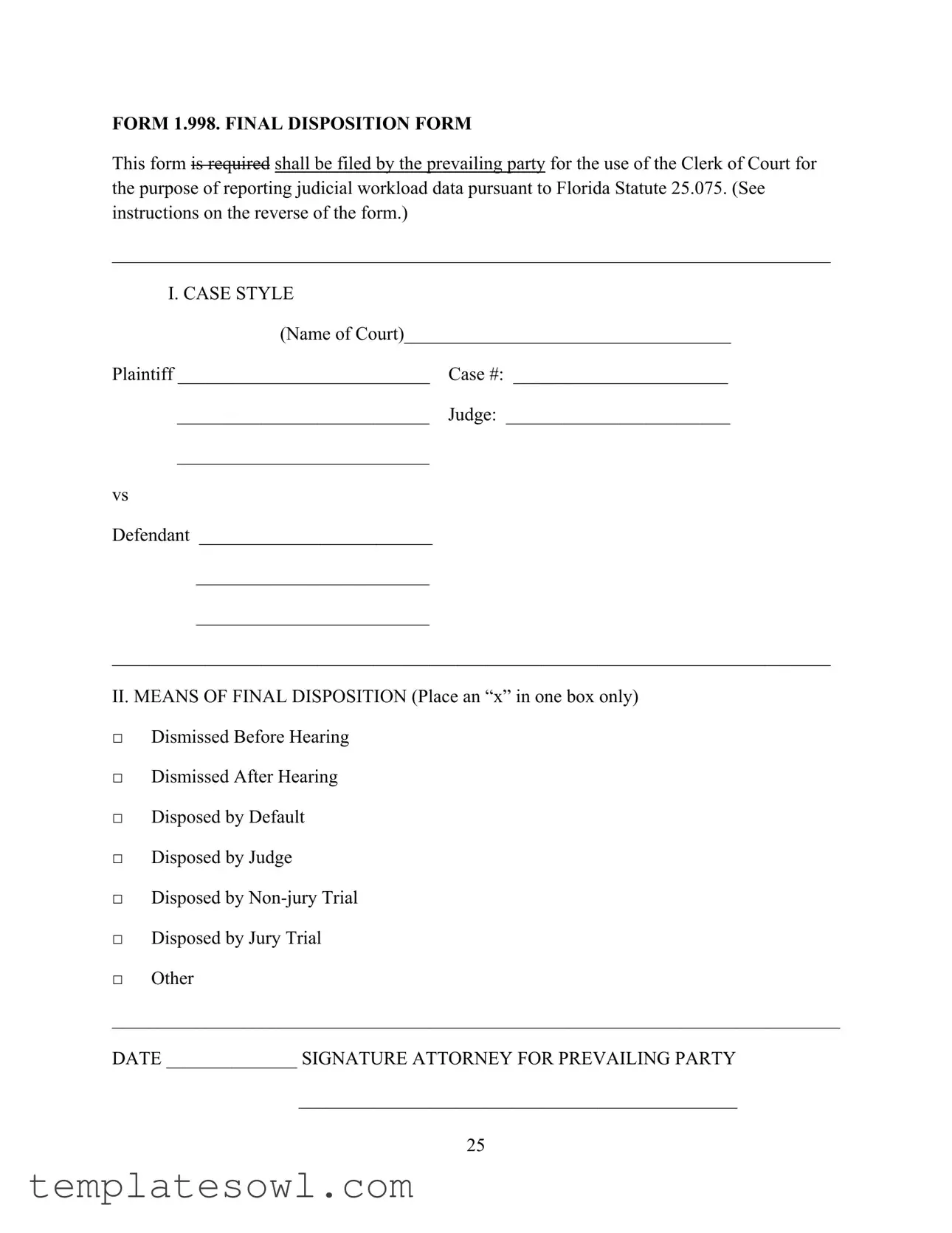FORM 1.998. FINAL DISPOSITION FORM
This form is required shall be filed by the prevailing party for the use of the Clerk of Court for the purpose of reporting judicial workload data pursuant to Florida Statute 25.075. (See instructions on the reverse of the form.)
_____________________________________________________________________________
I. CASE STYLE
(Name of Court)___________________________________
Plaintiff ___________________________ |
Case #: _______________________ |
___________________________ |
Judge: ________________________ |
___________________________ |
|
vs |
|
Defendant _________________________ |
|
_________________________ |
|
_________________________
_____________________________________________________________________________
II. MEANS OF FINAL DISPOSITION (Place an “x” in one box only)
□Dismissed Before Hearing
□Dismissed After Hearing
□Disposed by Default
□Disposed by Judge
□Disposed by Non-jury Trial
□Disposed by Jury Trial
□Other
______________________________________________________________________________
DATE ______________ SIGNATURE ATTORNEY FOR PREVAILING PARTY
_______________________________________________
25
INSTRUCTIONS FOR ATTORNEYS
COMPLETING FINAL
DISPOSITION FORM
I. Case Style. Enter the name of the court, the appropriate case number assigned at the time of filing of the original complaint or petition, the name of the judge assigned to the case and the names (last, first, middle initial) of plaintiff(s) and defendant(s).
II.Means of Final Disposition. Place an “x” in the appropriate box. The following are the definitions of the disposition categories.
(A)Dismissed Before Hearing - the case is settled or voluntarily dismissed before a hearing is held;
(B)Dismissed After Hearing - the case is dismissed by a judge, voluntarily dismissed, or settled after a hearing is held;
(C)Disposed by Default C a defendant chooses not to or fails to contest the plaintiff’s allegations and a judgment against the defendant is entered by the court;
(D)Disposed by Judge - a judgment or disposition is reached by the judge in a case which is not dismissed and in which no trial has been held. Includes stipulations by the parties, conditional judgments, summary judgment after hearing and any matter in which a judgment is entered excluding cases disposed of by default as in category (c) above;
(E)Disposed by Non-Jury Trial - the case is disposed as a result of a contested trial in which there is no jury and in which the judge determines both the issues of fact and law in the case;
(F)Disposed by Jury Trial - the case is disposed as a result of a jury trial (consider the beginning of a jury trial to be when the jurors and alternates are selected and sworn);
(G)Other - the case is consolidated, submitted to arbitration or mediation, transferred, or otherwise disposed by other means not listed in categories (A) through (F).
DATE AND ATTORNEY SIGNATURE. Date and sign the final disposition form.
26
